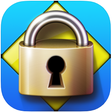iOS Apps for Educational Software
Top 3 Educational Software Apps for iOS
More Educational Software Apps for iOS

iRecovery
FreePrivate recovery tracker with secure access
iOS
French dictionary DIXEL Mobile
PaidDictionnaire Dixel Mobile...
iOSToca Kitchen Monsters
FreeEver wanted to play with your food?
iOS
yoho sports
FreeThe Yoho Sports bracelet is a smart device that can detect and evaluate people's movement, sleep quality, can help people to better understand and adjust their daily life and work.
iOSBBC Learning English
FreeThe official BBC Learning English app brings together all of your favourite lessons and presenters in one fantastic, simple-to-use package.
iOS
Pedi Help
FreeDosage and Calculations for Pediatrics and Anesthesia.PediHelp can help you calculate Dosages and Sizes in pediatric anesthesia and for pediatric...
iOSToca Band
PaidPlay with sounds and create your own band.
iOSEndless Learning Academy
FreePrepare your child for Preschool, Kindergarten, first grade, and beyond with this interactive educational app from Originator - Endless Learning...
iOSThe Robot Factory by Tinybop
PaidCreate robots. Test robots. Collect robots. Build with exoskeletons, zephyr mechanisms, hydrostatic tentacles, machinos locomotors, G-Force...
iOS
Patchwork Pals
PaidWhere did all the animals go. The elephant, the bunny and the bear just disappeared. Suddenly, the moth is all alone and she needs your help...
iOSToca Mini
PaidCute, weird or funny?
iOSToca Nature
Paid*App Store Best of 2014*Nature is magic. Toca Nature delivers that magic to your fingertips.Shape nature and watch it develop. Plant trees and grow...
iOSLDOCE (InApp) - Longman Dictionary of Contemporary English - 5th Edition
FreeThis app is not free!For new users, an InApp purchase is required to activate the dictionary.For previous LDOCE5 owners: if doesn't activate...
iOSCheats for Getting Over It
PaidSpeedruns, strategies and more.
iOS
TELLO EDU
FreeThe RYZE Technology officially authorized App supports and fully compatible with Tello & Tello Edu drone models, inspiring students to connect...
iOS
Sacred Heart Grammar School Newry
FreeSacred Heart Grammar School Newry, Northern IrelandThis App provides pupils, parents, past pupils and staff with convenient information about the...
iOS
Wongelnet
FreeWongelnet APP is a one stop resource that allow visitors to listen or view Amharic gospel teachings and gospel songs.In addition to teachings and...
iOSJW Library
FreeJW LIBRARY is an official app produced by Jehovah's Witnesses.
iOS
Yo Gabba Gabba! Babies
Paid* Limited time price as part of the App Store's Amazing Apps & Games Sale promotion!* Top Ten in Kids iPad & iPhone - Education * NEW Yo Gabba...
iOS
Batoto: The world of comic
FreeDiscover, Read, and Download a lot of manga for FREE!AppAdvice - "The go-to app for a lot of manga titles" iSource - "The whole experience is fast,...
iOS
LockDown Browser
FreeCarry out online exams without possibility of cheating.
iOS
Trulieve
FreeTrulieve..Relief Naturally.
iOS
iCarltonAR
FreeWhere Dinosaurs Come Life.
iOS
Face2Face Facial Palsy
PaidFace2Face is an application used to supplement treatment for facial paralysis caused by Bell's Palsy, stroke and acoustic neuroma. Facial palsy is...
iOS